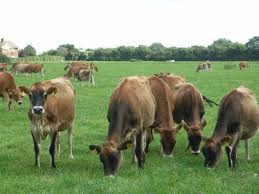Methane has 23X the warming power of the more popular CO2 in climate change estimates but it drastically shorter in duration. Still, that is enough. When natural gas caused American CO2 emissions from energy to plummet back to early 1990s levels, solar and wind lobbyists and their environmental allies claimed that methane, which they had endorses as an alternative to coal for decades, was suddenly a crisis.
An estimate by Joint Global Change Research Institute (JGCRI) published in Carbon Balance and Management claims that global livestock methane (CH4) emissions for 2011 are 11% higher than the estimates based on guidelines provided by the Intergovernmental Panel on Climate Change (IPCC) in 2006. This makes sense, natural gas is more popular and has kept energy costs low for the poor while lowering the more pressing CO2 concern. Yet they say that is instead due to an 8.4% increase in CH4 from enteric fermentation (digestion) in dairy cows and other cattle and a 36.7% increase in manure management CH4 compared to IPCC-based estimates. Manure methane is due primarily to the popularity of organic food, which has doubled in that time. Not to mention composting, which has always seen a surge in use.
Revised manure management CH4 emissions estimates for 2011 in the US from this study were 71.8% higher than IPPC-based estimates before the organic food and fracking boom.

You're blaming us for higher organic food emissions?
This was all done using statistical manipulation. The authors re-evaluated the data used to calculate IPCC 2006 CH4 emission factors resulting from enteric fermentation in dairy cows and other cattle, and manure management from dairy cows, other cattle and swine. They show that estimating livestock CH4 emissions with the revised emissions factors, created in this study, results in larger emission estimates compared to calculations made using IPCC 2006 emission factors for most regions, although emission estimates varied considerably by region.
The estimates presented in this study are also 15% larger than global estimates provided by the U.S. Environmental Protection Agency (EPA), but smaller than estimates provided by the EPA for the US, 4% larger than EDGAR (Emissions Database for Global Atmospheric Research) global estimates, 3% larger than EDGAR estimates for US and 54% larger than EDGAR estimates for the state of California. Both the EPA and EDGAR use IPCC 2006 default information which may have contributed to their under estimations, the authors believe.
So which number do you trust? None of them, really. They are all estimates. Methane is still the better waypoint to true green energy in realistic ecological footprints, like nuclear or even fusion in 50 years, than solar and wind.





Comments